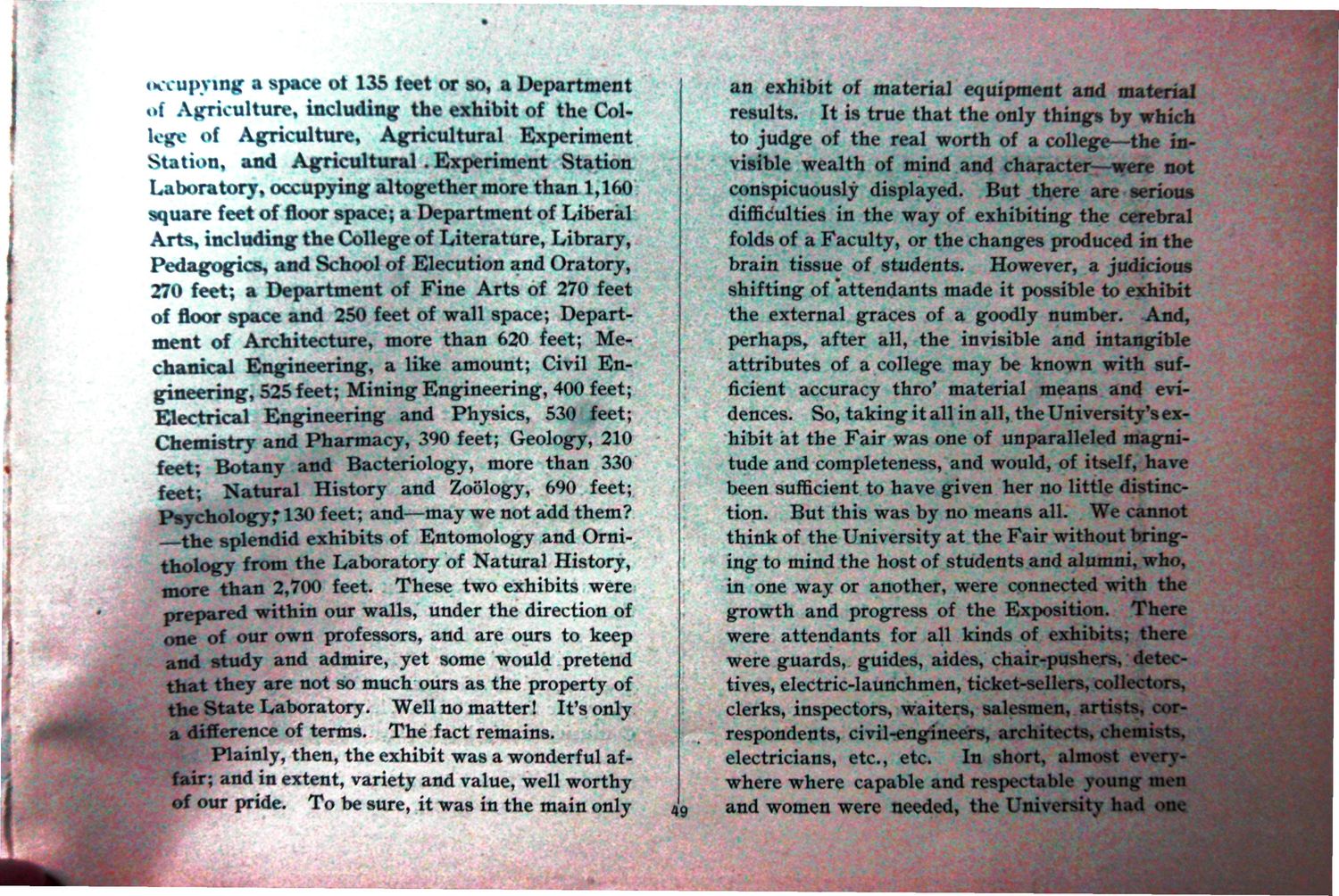| |
| |
Caption: Illio - 1895
This is a reduced-resolution page image for fast online browsing.

EXTRACTED TEXT FROM PAGE:
xupying a space ot 135 feet or so, a Department f Agriculture, including the exhibit of the Colge of Agriculture, Agricultural Experiment tation, and Agricultural. Experiment Station Laboratory, occupying altogether more than 1,160 square feet of floor space; a Department Arts, including the College of Literature, Library Pedagogics, and School of Elecution and Oratory 1 270 feet; a Department of Fine Arts of 270 fee of floor apace and 250 feet of wall space; Depart Architecture, more than 620 chanical Engineering, a like amount; Civil Engineering, 525 feet; Mining Engineering, 400 feet; Electrical Engineering and Physics, 530 feet; Chemistry and Pharmacy, 390 feet; Geology, 210 feet; Botany and Bacteriology, more than 330 feet; Natural History and Zoology, 690 feet; Psychology,* 130 feet; and—may we not add them? the splendid exhibits of Entomology and Ornithology from the Laboratory of Natural History, more than 2,700 feet. These two exhibits were prepared within our walls, under the direction of one of our own professors, and are ours to keep and study and admire, yet some would pretend t h a t they are not so much ours as the property of th State Laboratory. Well no matter! It's only a difference of terms. The fact remains. Plainly, then, the exhibit was a wonderful affair; and in extent, variety and value, well worthy of our pride. To be sure, it was in the main onlv 11 \ A an exhibit of material equipment and material results. It is true that the only things by which to judge of the real worth of a college—the invisible wealth of mind and character—were not conspicuously displayed. But there are serious difficulties in the way of exhibiting the cerebral folds of a Faculty, or the changes produced in the brain tissue of students. However, a judicious shifting of 'attendants made it possible to exhibit the external graces of a goodly number. And, perhaps, after all, the invisible and intangible attributes of a college may be known with sufficient accuracy thro* material means and evidences. So, taking it all in all, the University's exhibit at the Fair was one of unparalleled magnitude and completeness, and would, of itself, have been sufficient to have given her no little distinction. But this was by no means all. We cannot think of the University at the Fair without bringing to mind the host of students and alumni, who, in one way or another, were connected with the growth and progress of the Exposition. There were attendants for all kinds of exhibits; there were guards, guides, aides, chair-pushers, detectives, electric-launchmen, ticket-sellers, coll tors, clerks, inspectors, waiters, salesmen, artists, rrespondents, civil-engineers, architects, chemists, electricians, etc., etc. In short, almost everywhere where capable and respectable young men and women were needed, the Uni\ rsity had one
| |